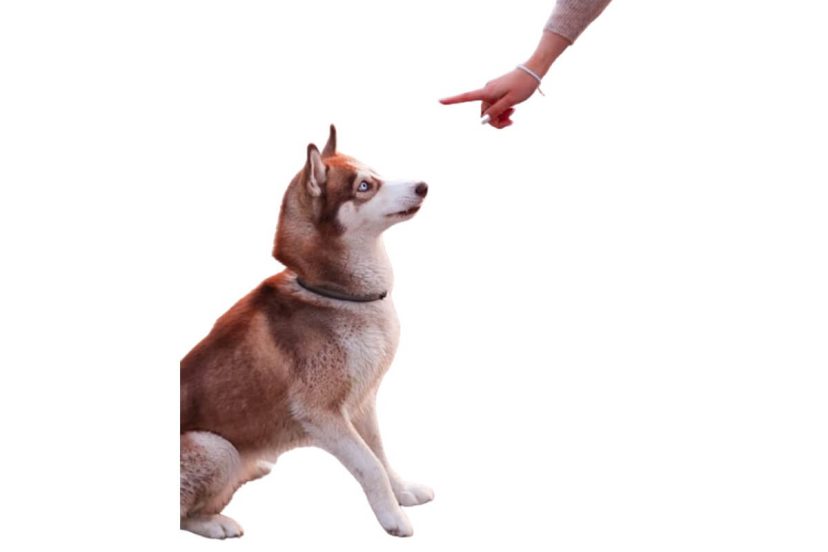How to Train a Dog: 9 Insider Tips
As a devoted dog parent and enthusiast, I wholeheartedly celebrate National Train Your Dog Month, an invaluable opportunity to highlight the significance of training our beloved canine companions. This month serves as a reminder to dog owners across the nation about the rewards of investing time and effort into training. One of the most important and rewarding things you can do as a pet parent is to train your dog well, but it’s often hard to know how to get started. In recognition of January being National Train Your Dog Month, I’ll share insights, tips, and strategies about how to train a dog, to make this month, and every month, a rewarding journey in training and bonding with your furry friend.
The Importance of Training Your Dog
Training is not just about teaching commands; it’s the cornerstone of a strong and harmonious relationship between you and your dog. It’s an avenue for effective communication, fostering mutual understanding, and establishing boundaries. Moreover, a well-trained dog is a joy to be around, contributing positively to your household and the community.
Understanding a Dog’s Behavior
Every dog is unique, and understanding their behavior is fundamental to successful training. Recognize their individual personality, triggers, fears, and motivations. This understanding forms the basis for tailoring your training approach to suit your dog’s needs and temperament.
9 Tips and Strategies for How to Train a Dog
1. Positive Reinforcement Techniques
Positive reinforcement is an incredibly powerful and humane approach to training your furry companion. This method revolves around acknowledging and rewarding your dog for showcasing desired behavior, rather than focusing on reprimanding unwanted actions. Think about it as praising your pup for being a good student in the school of life! When your dog follows your commands or displays behavior that you appreciate, offer them rewards such as treats, praise, or playtime. This positive reinforcement strategy helps establish a strong link between good conduct and pleasant experiences, motivating your doggie to repeat these behaviors.
However, it’s crucial to discern when to reward and when to withhold the reinforcement. Suppose your dog jumps excitedly or barks persistently to grab your attention. In such cases, responding immediately might inadvertently reinforce these behaviors. Instead, wait until your dog is calm and composed before showering them with attention or treats. This approach helps your furry friend understand that calm behavior results in positive attention, while hyperactivity or excessive barking doesn’t yield the same outcomes. Remember, consistency and timing play pivotal roles in effectively reinforcing positive behaviors while curbing undesirable actions.
2. Rewarding Options
When it comes to training your canine companion, finding the perfect reward can make a world of difference. Dogs, much like us, have their unique preferences. Some are driven by their love for food and will do anything for a tasty treat, while others may be a bit choosier. For those food enthusiasts, soft, chewy treats might work wonders compared to hard, crunchy ones. It’s all about understanding what gets their tail wagging with excitement!
Yet, not every dog is inclined towards food as a reward. If your furry friend doesn’t seem particularly enticed by treats, fret not! You can explore alternative rewards that match their interests. Engaging in a quick play session with their favorite toy or showering them with plenty of affection can serve as equally powerful incentives for some dogs. Remember, every dog has its own quirks and preferences, so experimenting with different rewards can be the key to discovering what truly motivates and encourages your pup during training sessions.
3. Being Consistent
Consistency is a fundamental aspect when it comes to effective dog training. It’s not just about sticking to a training routine but also about maintaining a consistent approach across different aspects. Using the same commands or cues repeatedly helps your furry friend understand what’s expected of them. Dogs respond well to familiar phrases and tones, so employing consistent language and intonation when giving commands aids in their comprehension.
Moreover, consistency should extend to all family members involved in the dog’s training. Dogs learn through patterns and repetition, so mixed signals or conflicting rules among family members can confuse them. If, for instance, one person allows the dog on the couch while another doesn’t, this inconsistency may disrupt the training progress. To effectively instill new behaviors or routines, everyone interacting with the dog should follow the same guidelines. Consistency ensures a clear, predictable environment for your pet, fostering better learning and understanding of desired behaviors.
Consistency, thus, becomes the cornerstone of successful dog training. It creates a structured, predictable environment that helps dogs comprehend what’s expected of them. By using consistent cues, commands, and rules among all family members, you provide your canine companion with a cohesive training approach, promoting a quicker and more effective learning process. Consistency establishes a clear communication channel, enabling your dog to grasp new habits and behaviors more easily, fostering a harmonious relationship between you and your furry friend.
4. Keep it Short and Frequent
One of the most effective methods for how to train a dog is adopting short, frequent training sessions rather than long, exhaustive ones. Shorter sessions, around five to ten minutes or so, maintain your dog’s attention and focus. Longer sessions might lead to distraction or boredom, hindering the learning process. By keeping it brief and engaging, you ensure your dog is receptive and motivated during each training experience.
Moreover, dogs often associate commands with specific environments or people. To overcome this limitation, vary your training locations and involve different individuals. Practicing commands in diverse places with various distractions helps your furry friend understand that the commands remain consistent, regardless of the setting or who is giving them. For instance, teaching your dog to “sit” at home and then reinforcing the same command in a park or a bustling street helps them generalize the learned behavior across different scenarios. This way, your pup learns to respond consistently to commands regardless of the environment or the person giving them, making training more effective and reliable.
5. Step By Step
When it comes to how to train a dog, taking things step by step is often the most effective approach. Breaking down complex behaviors or commands into smaller, more manageable parts is a great way to start. For instance, if you’re teaching your dog the command “come,” begin by rewarding and praising them for taking even one step in your direction. This incremental reinforcement helps your pup grasp the initial concept before gradually building up to the complete behavior.
Moreover, this method applies not only to teaching new commands but also to modifying unwanted behaviors. By deconstructing behaviors into smaller elements, you create a more achievable learning process for your dog. For instance, if you’re trying to curb an undesirable habit, such as jumping up, start by rewarding moments when your dog keeps all four paws on the ground. (I often use the phrase: four on the floor, to reinforce this behavior.) Once they understand this part, progress to the next step. This staged approach creates a clearer understanding for your dog and allows them to gradually grasp and master the behavior or command you’re teaching.
6. Fun for Everyone
Making training your dog an enjoyable experience for both you and your furry friend is essential. Injecting fun elements into training sessions not only keeps your dog engaged but also helps in reinforcing positive behavior. Incorporating short play breaks between training repetitions can add an exciting twist to the routine. These brief moments of play can serve as rewards for your dog’s good behavior and act as a bonding experience.
Moreover, expanding beyond standard obedience commands by introducing trick training can add an element of excitement to your training sessions. Teaching your dog tricks not only adds variation but also brings joy and enthusiasm to the training process. Dogs often thrive on positive reinforcement, and tricks can provide an excellent opportunity for them to showcase their abilities, leaving both you and your dog feeling accomplished and content after a successful training session. Tricks can be a source of amusement for everyone involved and create a positive atmosphere that encourages your dog’s eagerness to learn and please you.
7. Applaud Incremental Progress
Cheer for the steps of improvement, no matter how small, in your dog’s training journey. When embarking on training sessions with your dog, acknowledging the small victories along the way is crucial. Every step, no matter how tiny, signifies progress. Showering your furry companion with praise for each achievement, whether it’s mastering a simple command or showing improvement in behavior, reinforces positive learning. This encouragement not only boosts your dog’s confidence but also maintains their enthusiasm for future training sessions. Remember, training is a journey filled with numerous small milestones, and appreciating these small accomplishments is key to building a stronger bond between you and your pet.
Reveling in the small victories serves as a source of motivation for both you and your dog. It keeps the training environment positive and fosters an environment where your pet feels valued and rewarded for their efforts. Acknowledging and praising the incremental successes throughout the training process instills a sense of accomplishment in your furry friend, making them eager to continue learning and striving for more. Celebrating these small wins is a testament to your dog’s progress and strengthens the trust and understanding between the two of you, making the training journey an enjoyable experience for both doggie and dog parent.
8. Incorporate Training into Daily Life
Training your dog doesn’t always have to be a separate activity; integrating it into your everyday routine can be both seamless and effective. Incorporating brief training sessions into your dog’s daily life can work wonders. Simple tasks like asking your dog to sit before meals, respond to a command before heading out for a walk, or engaging in a short training exercise before playtime can make a significant difference. These moments not only reinforce good behavior but also create a positive association between the command and the resulting action.
Consider these daily interactions as training opportunities. By embedding training exercises into your routine, you’re encouraging your dog to respond to commands in various contexts, reinforcing their understanding and compliance. This approach helps keep your pup engaged, mentally stimulated, and consistently learning throughout the day. Moreover, the frequency of these short training sessions ensures that the lessons remain fresh in your dog’s mind, enhancing their ability to follow commands in different situations. Making training part of their everyday life strengthens the bond between you and your furry friend while enhancing their behavior and responsiveness.
9. Integrate Hand Signals
Communication is key in how to train your dog, and sometimes our furry friends respond better to visual cues than verbal commands. Incorporating hand signals alongside verbal cues can significantly enhance your dog’s understanding. It’s like teaching them a secret language where your hands speak volumes!
Start by associating a specific hand signal with a command. For instance, use an open palm facing upward for the “sit” command. Pair this hand signal consistently with the spoken command “sit.” Dogs are incredibly perceptive to body language, so be mindful of your hand movements, ensuring they remain clear and consistent. Initially, practicing with hand signals alone can help your dog understand the desired behavior more effectively. Over time, as your pet becomes familiar with the hand signals, gradually introduce the corresponding verbal commands. This approach aids in reinforcing their understanding, providing them with multiple cues to grasp the intended behavior.
Using hand signals in dog training can create a stronger connection between you and your pup. It’s like creating a silent but effective way to communicate. Dogs appreciate visual cues as much as they do auditory ones, and incorporating hand signals enables them to understand your instructions more intuitively. Remember, patience and consistency are key elements. By linking specific hand gestures with verbal commands, you’re essentially broadening your communication toolkit, making training sessions more engaging and comprehensible for your furry companion.
Conclusion
National Train Your Dog Month is a fantastic opportunity to embark on a fulfilling journey of training and bonding with your furry friend. This month-long celebration, focused on how to train a dog, serves as a reminder of the profound importance of investing time and effort in training our beloved canine companions. It’s not just about teaching commands; it’s about nurturing a strong bond, effective communication, and establishing boundaries. By emphasizing the fundamental strategies, such as positive reinforcement, consistency, and understanding your dog’s behavior, the month of January provides a platform to advocate for a positive training experience, this month and all year long.
Training your dog isn’t merely about teaching them to sit, stay, or roll over—it’s about fostering a meaningful relationship built on trust, respect, and mutual understanding. Recognizing and celebrating the incremental steps of progress is pivotal, as it not only boosts our canine friends’ confidence but also reinforces a positive training environment. Whether it’s incorporating play sessions, integrating tricks into training routines, or praising the small victories, this month has underscored the joy and rewards of training. As a devoted dog parent, I urge fellow enthusiasts to carry the essence of National Train Your Dog Month throughout the year, embracing the journey of training, learning, and growing alongside our furry companions. Remember, training is a lifelong endeavor—an ongoing conversation that builds a strong, loving bond between you and your beloved four-legged friend.
How to Train a Dog FAQs
Q 1: How important is training for my dog?
A: Training is fundamental for establishing a harmonious relationship with your dog. It’s not merely about teaching commands but building a bond through effective communication. Well-trained dogs contribute positively to your household and the community.
Q 2: How do I understand my dog’s behavior for effective training?
A: Recognize your dog’s personality, fears, triggers, and motivations. Understanding these aspects helps tailor your training approach to suit your dog’s needs and temperament, making the process more effective.
Q 3: What is positive reinforcement, and why is it essential in dog training?
A: Positive reinforcement involves rewarding desired behavior rather than focusing on reprimands. It establishes a link between good conduct and pleasant experiences, motivating your dog to repeat these behaviors. Consistency and timing are crucial in reinforcing positive behavior.
Q 4: How long should training sessions be, and why is consistency important?
A: Short, frequent training sessions around five minutes maintain your dog’s attention. Consistency in commands and approaches across various settings helps your dog understand expectations and generalize behaviors effectively.
Q 5: Can integrating training into daily routines enhance my dog’s learning?
A: Absolutely! Incorporating brief training moments into daily life tasks, like asking your dog to sit before meals or respond to a command before walks, reinforces good behavior. These interactions keep your dog engaged, mentally stimulated, and consistently learning.




